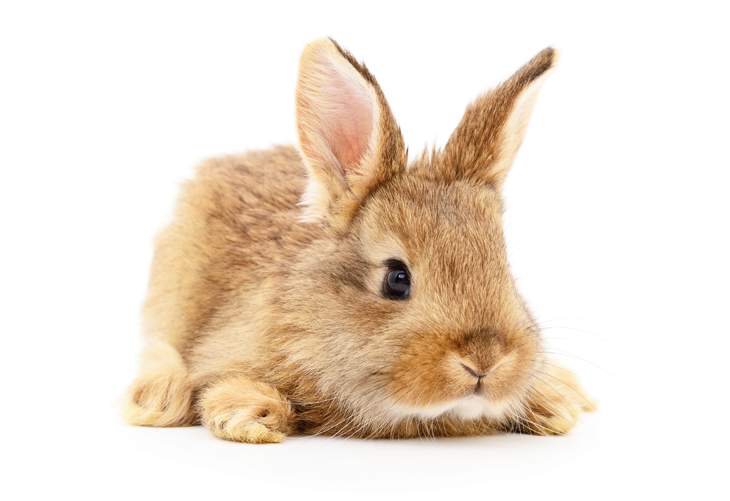What is my Bunny Saying? Decode Your Bunny’s Behavior

Pet bunnies are full of personality. They can be hopping around like an energetic toddler or lounging on the couch like a retiree with not a care in the world. Deciphering patterns in behavior, certain noises, or bunny body language can help you understand what your bunny is feeling or trying to communicate.
Get to know your pet bunny by learning their behavior with these tips.
BEHAVIORS
“Binkying” or “Boinking”:
As a way of expressing joy, bunnies typically dance by leaping into the air. As many bunny owners call it, a boink, is a sign of excitement. Also called a binky, the rabbit sometimes gets a running start into their sudden burst.
Chinning:
Rabbits have a unique way of showing many emotions, and chinning is one of them. Their chin has special scent glands on it, so they mark their territory with their chins. Similar to pet cats rubbing against your leg, if your pet rabbit places their chin on your shoulder or arm, they are claiming you as theirs.

Digging:
Rabbits will dig with their feet onto their owner’s legs or feet as a way to get attention. They are typically looking for a treat or to be petted.
Flopping:
A flop is when your bunny rolls over onto their side. This indicates contentment when bunnies roll over and flop down to relax.
Kicking Up Feet:
Not to be confused with a boink or a bink, when bunnies kick their feet up while hopping away, this is a sign of being displeased. It appears that they are kicking dirt in their opponent’s face as a way of expressing their displeasure.
Licking:
Licking is a way bunnies groom each other. If your bunny licks you, it’s a sign of affection as you’ll often see pairs of bunnies grooming each other this way. A bunny lick is a sign of a bond.
Nudging:
Nudging can either mean one of two things: Your rabbit is trying to get past you or smell something and you’re in their way. Or they are trying to get your attention because they want a treat or to be petted. Whether an act of bossiness or attention seeking, your rabbit is trying to get your attention.
Nipping:
Sometimes an ignored nudge is followed up with a nip as a way to get attention. They typically don’t mean to harm the person with this small bite. In other cases, you might get a nip when you’re in your rabbit’s space and they feel territorial or threatened.

Running Around:
Sometimes bunnies run around at high speeds to show their excitement. As mentioned, the speedy movement is sometimes followed by a boink. You might experience this behavior when your bunny is about to get a treat.
NOISES
Grunting:
A grunt or a growl from your bunny signifies anger or stress. This is their warning that they need space.
Honking:
Excited rabbits will sometimes emit a honking or buzzing noise. This means they are happy or feeling excitement about whatever they are doing.
Screaming:
The only time you’ll hear your bunny scream is if they are in tremendous pain. They should be attended to and brought to the vet immediately if you hear a scream.
Teeth Grinding:
When a bunny grinds their teeth, they are communicating enjoyment. It’s typical to hear a purr or teeth grinding when a rabbit is getting petted. On the contrary, loud and often teeth grinding mixed with a hunched or tense posture means they are feeling pain.
Thumping:
This is a bunny’s way of warning others they sense danger. A thump noise is made when the bunny hits their hind leg against the ground to communicate to others that they should “watch out.”
Keep an eye on your bunny’s behavior and an ear out for any noises they make. This will help you decode what your pet is feeling and how to assist them in case they need your attention. To learn more facts about your pet bunny, visit our blog post. And remember to keep the right supplies for your pet with this complete checklist for your pet bunny.
Sources:
http://myhouserabbit.com/rabbit-behavior/binkies-nose-bonks-and-flops-bunny-behavior-explained/
https://www.petcha.com/12-common-rabbit-behaviors-that-might-puzzle-you/
http://www.bunnyhugga.com/a-to-z/rabbit-behaviour/common-behaviour.html


